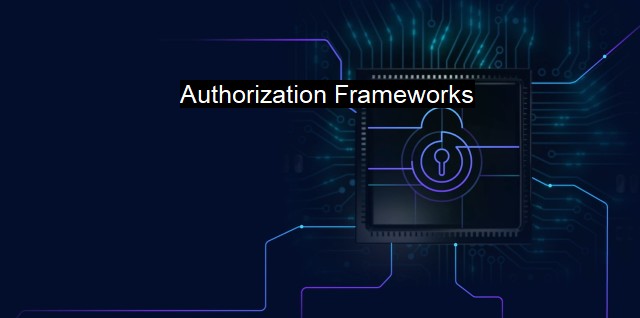What are Authorization Frameworks?
Understanding Authorization Frameworks: A Crucial Component of Cybersecurity and Antivirus
The concept of "Authorization Frameworks" refers to the structured system of rules that manage and regulate the allocation of specific privileges and rights to different users in a data system. The surrounding context is cybersecurity and antivirus, emphasizing its importance within secure operations that are underway throughout numerous channels in the digital world. Given the increasing relevance and attention that are directed at secure transactions and data confidentiality, Authorization Frameworks gain importance as a mechanism protecting information from unauthorized access.An Authorization Framework is an essential component for securing a data system. It informs the user’s capabilities within a system, detailing what actions that particular user can implement. Some actions might include read, write or execute access to certain databases or system files. For instance, while administrators may have unrestricted access, other users could find their capabilities quite limited. By restricting what actions specific users are allowed to access, the framework thus reduces the likelihood of a data breach or system attack.
In an Authorization Framework, there are three primary components. These include; identities, policies, and systems. the identity trait identifies users through unique credentials, like usernames and passwords. Policies refer to the rulesets created for permissions to use system resources. Lastly, systems make reference to the elements protected by the framework and hence comprise databases and infrastructure, among others. Working cohesively, these three elements ensure user credentials are safeguarded, system resources are protected, and rules are established for system interaction.
Authorization Frameworks also play a significant role in antivirus systems. The reason for this is that they manage who and what is allowed to access controlled system features such as real-time scanning, signature updates and the firewall system. By limiting these critical antivirus system functionalities to specific users, potential threats from both internal and external sources are significantly reduced.
Well-defined and efficiently implemented Authorization Frameworks do not only protect against ill-intentioned attacks by unauthorized actors. They also shield systems from good-faithed and accidental mistakes by authorized users who may unintendedly unleash a virus, delete vital data, or facilitate a data leakage scenario.
One of the crucial merits in enforcing Authorization Frameworks is that it provides advanced levels of control over data accessibility within the system. it's critical to consider that designing an effective Authorization Framework is a complex and multi-faceted task. Each system must have a specifically tailored Authorization Framework, calendars with its unique operating environment as all systems differ according to different attributes.
Software developers are subject to stringent responsibility in delivering robust Authorization Frameworks that not only meet but exceed security standards. They should design these frameworks with the least amount of privileges to ensure any authorized access does not result in any unforeseen security compromise. Regular testing, updating and reevaluation of these Authorization Frameworks are key in upholding its longevity and its overall operational functionality.
The advent of cloud technology in the IT industry has further escalated the importance of strong Authorization Frameworks given the enormous amount of data stored in distributed systems. A robust and refined Authorization Framework adds an extra layer of industry-standard protection, ensuring the safeguarding of data circulating within the system.
Authorization Frameworks are a pivotal cornerstone in secure IT operations, strongly contributing to cybersecurity and antivirus functionalities. They are integral components working continuously to regulate, protect, and manage user privileges and system resources from malicious invasions and mismanaged actions. This strategic organization of rules and policies ensures the fundamental integrity and protection of system data, filling an unalienable role in global data operations and cybersecurity in the digital age.

Authorization Frameworks FAQs
What is an authorization framework?
An authorization framework is a set of policies and procedures that define how access to resources and data is granted or denied. It is used to control who can access what and when.What is the importance of implementing an authorization framework in cybersecurity?
An authorization framework ensures that only authorized individuals or systems have access to sensitive information, resources or data. This is critical in cybersecurity as it helps prevent unauthorized access, modification, or destruction of data, and protects against cyber attacks.What are some popular authorization frameworks used in antivirus software?
Some of the popular authorization frameworks used in antivirus software include Role-Based Access Control (RBAC), Attribute-Based Access Control (ABAC), Mandatory Access Control (MAC), and Discretionary Access Control (DAC).What are some best practices for implementing an effective authorization framework?
Some best practices for implementing an effective authorization framework include regularly reviewing and updating access control policies, establishing user roles and permissions, implementing multi-factor authentication, logging and monitoring user activity, and conducting regular security audits.| | A | | | B | | | C | | | D | | | E | | | F | | | G | | | H | | | I | | | J | | | K | | | L | | | M | |
| | N | | | O | | | P | | | Q | | | R | | | S | | | T | | | U | | | V | | | W | | | X | | | Y | | | Z | |
| | 1 | | | 2 | | | 3 | | | 4 | | | 7 | | | 8 | | |||||||